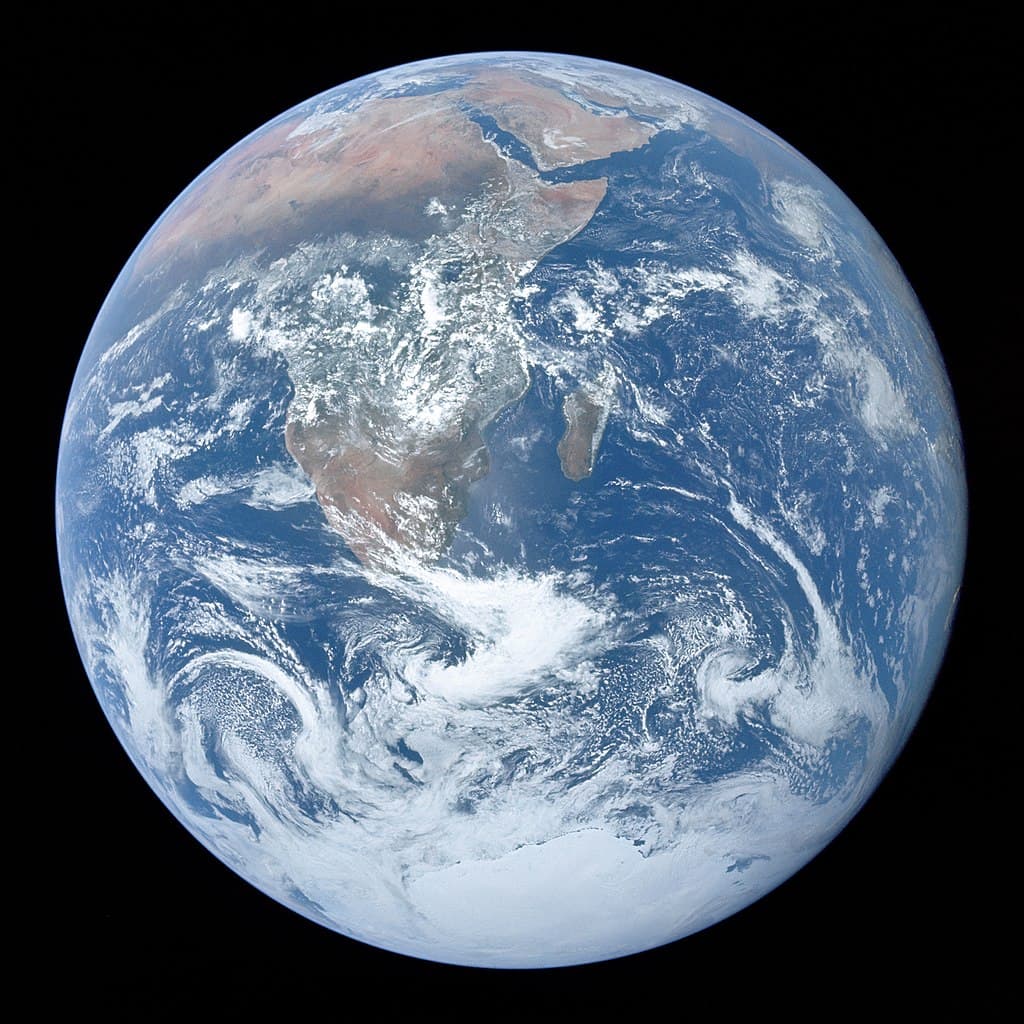The Earth
Pale blue dot

The Blue Marble: Earth's Appearance
From the vantage point of space, Earth presents a stunning sight—a "pale blue dot" as astronomer Carl Sagan aptly described it. Its vast oceans dominate its surface, earning it the nickname "the Blue Planet." Contrasting with the deep blues are the continents, a patchwork of greens, browns, and whites, representing landmasses, vegetation, and icy polar regions.
Geology and Geography: Earth's Structure
Beneath its scenic surface lies a complex world of geology and geography. Earth's structure consists of several layers: the solid inner core, the molten outer core, the mantle, and the crust. Tectonic plates, large sections of the Earth's crust, float on the semi-fluid mantle, constantly shifting and shaping the planet's surface through processes like volcanic eruptions, earthquakes, and mountain formation.
The Lifeblood of Earth: The Atmosphere
Wrapped around Earth like a protective blanket is its atmosphere, a thin layer of gases crucial for supporting life. Composed primarily of nitrogen and oxygen, with traces of other gases like carbon dioxide and water vapor, the atmosphere plays a vital role in regulating temperature, filtering harmful radiation from the Sun, and facilitating weather patterns that distribute heat and moisture across the globe.
Dynamic Systems: Weather and Climate
Earth's atmosphere is a dynamic system, giving rise to the ever-changing phenomena of weather and climate. Weather refers to short-term atmospheric conditions—such as temperature, humidity, wind, and precipitation—that can vary from day to day and place to place. Climate, on the other hand, describes the long-term patterns and averages of weather elements over larger regions and extended periods, influencing ecosystems, agriculture, and human activities.
Symbiotic Relationships: Earth's Biosphere
At the heart of Earth's vibrant ecosystems lies the biosphere, the interconnected web of life that spans from the depths of the oceans to the highest mountains. From microscopic bacteria to towering sequoias, from tiny insects to majestic whales, Earth hosts an astonishing array of organisms, each playing a unique role in maintaining the delicate balance of life on our planet.
Humanity's Impact: Environmental Challenges
Despite Earth's resilience, human activities have increasingly placed strains on its ecosystems and resources. Deforestation, pollution, habitat destruction, and climate change threaten biodiversity and the stability of Earth's natural systems. Addressing these challenges requires collective action and a commitment to sustainable practices that preserve the planet for future generations.
Our Cosmic Address: Earth in the Universe
In the vastness of space, Earth occupies a tiny corner of the cosmos—a pale blue speck orbiting an average star in the outer reaches of the Milky Way galaxy. Yet, it is here, on this small, fragile planet, that the remarkable story of life unfolds, making it a precious jewel in the tapestry of the universe.
As members of the Astronomy Club, let us not only gaze outward at the wonders of the cosmos but also cultivate a deeper appreciation for the intricate beauty and complexity of our home planet, Earth. By understanding and protecting this precious world, we ensure that it continues to inspire and sustain us for generations to come.